There are various types of electric guitars. There is no good or bad choice but depends on the player’s preference. For example, the same Strat is used by shredders like Malmsteen to Blues Rock Guitar Players like SRV. It’s a personal choice.
So, If you are planning to buy an electric guitar, go through this entire article carefully to check the different types of electric guitars and which one comes closest to your choice.
Let’s get started.
Disclosure: We’re an affiliate. We hope you love the products we recommend! This post contains affiliate links. If you use these links to buy the products, we may earn a commission from the qualified sales. These are at no additional cost to you. Thank you if you use our links, we really appreciate it!
The main parts of the guitar
Before we get into the different types of electric guitars, we should try to understand what are the different parts of the guitar. This has a bearing on the guitar types which we will discuss later on.
The Body
The body of the guitar is perhaps the most important part of the guitar from a housing perspective. The body of the guitar is the section which houses the electronics, pick ups, pick up selector switches, the volume and the tone knobs and the output jack. In many types of electric guitars, built in pre amps are housed in the body of the guitar as well.
Electric Guitars differ in types by the pickups they house. Some electric guitars only have single coils types, while many have humbuckers or a combination of them. There are ps ickups which are active and needs battery to operate while most of the other pickups are passive.
The body also provides support to the neck and depending on the shape (cutaway), gives you access to the higher frets on the fretboard. The wood used in the body of the guitar will have a bearing on the sound, look, and weight of the guitar. Some electric guitars are hollow body types and some are semi-hollow ones.
The Neck
The neck is perhaps given the most importance while selecting an electric guitar. Different playing styles will have different neck profile preference (we will cover more on this towards the end of this article).
The neck of the guitar is made up of a long piece of wood that holds the fretboard. These could be made of different woods and have an impact on the sound and the cost of the guitar. Some necks are bolted on the body while some electric guitars have a through neck profile. The frets on the fretboard differ in material (eg stainless steel) and size ( eg jumbo, regular etc).
Electric Guitars also differ in types by the number of frets they have on the fretboard. Super Strats normally have a higher number of frets with a cutaway on the body to access them. These are all important details that distinguish one electric guitar from another.
The Headstock
The headstock is the section where the fretboard ends and an area that contains the tuners. Headstocks give the guitars a unique look. There are almost signature headstocks different manufacturers have by which they could be identified even from a distance. Some types of electric guitars do not have a headstock. These are called headless guitars.
You can have the classic large fender Stratocaster headstock of the Jimi Hendrix Signature models to smaller headstocks in the other Fender Strats. You have unique headstocks in Super Strats like in the Ernie Ball Music Mans. Then you have different pointed ones like in Ibanez, Jackson, etc and you also have the headless ones from the likes of Kiesel and other manufacturers.
The Bridge
The bridge is a vital component which differentiates electric guitars by their types. The bridge is the section where one end of the string is securely attached and the other end to the tuners on the headstock.
Broadly bridges can be fixed or floating in nature. Floating bridges can hold a tremolo bar (also called the whammy bar). The whammy bar can help in guitar dynamics and also affect the intonation of the guitar. Different players have different preferences for bridges and are a huge piece in choosing a guitar.
So, now with a good understanding of the main parts of the guitar, let’s get to know the different types.
The Telecaster
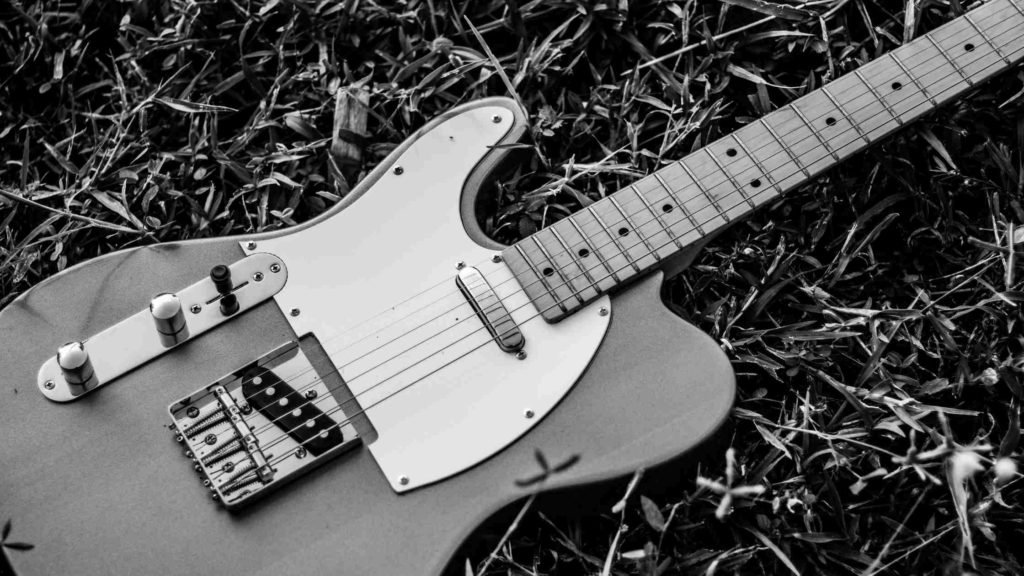
The Telecaster model of Fender was introduced in 1951 and little did Leo Fender know how this model will help to influence music for decades to come. Though there have been many types of electric guitars around, what Telecaster brought to the table was a unique solid-body Spanish Styled Electric Guitar.
The Guitar
Many of the features of the Telecaster was borrowed from the Hawaiian Steel Guitars which Fender was already manufacturing. A few examples of these are the “ashtray” bridge cover, knurled chrome knobs, Kluson tuners, and combination of bridge and bridge pickup in one integral unit.
Most of the Telecasters would have a solid Ash or Adler body with a bolt-on Maple neck. The fretboards are made most commonly of maple (or otherwise Rosewood). The body houses 2 single-coil pickups – one at the bridge position and one at the neck position with a 3 position pick up switch and a volume and tone knob. The fretboard comes with either 21 or 22 frets.
Telecasters have a fixed bridge and not a floating one. So, you cannot operate a whammy bar on a Tele. The Telecaster has a bright and clean tone with a piercing high, thick midrange, and bass.
Artists
The Telecaster has users from different genres of music. To name a few Eric Clapton, Jimmy Page, Muddy Waters, BB King, Pete Tonwnshend, Syd Barret, Ritchie Kotzen, Andy Summers and many more.
Recommendations
If you are a beginner you can consider the Fender Player Telecaster and if you are a more advanced player then consider American Professional Telecasster.
No products found.
No products found.
The Mighty Stratocaster
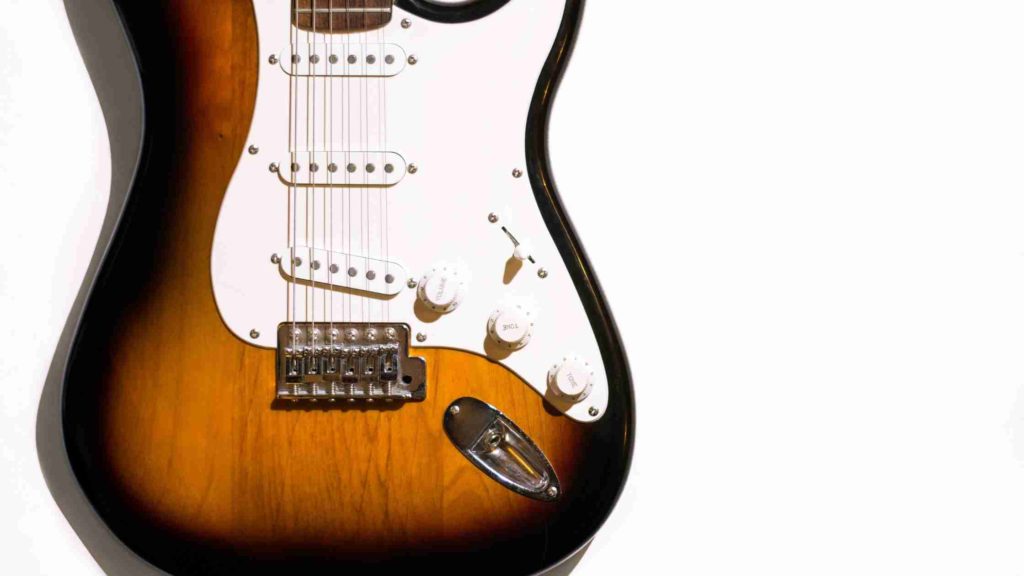
Background
Fender launched the Stratocaster as a new electric guitar model in 1954 and Jimi Hendrix made it famous in the 1960s. The Stratocaster is perhaps the most famous of all guitar models and has been used by various genres of music starting from blues, country, jazz, heavy metal, shred guitar players, and also the new generation fusion guitarists.
Though the Stratocaster is snubbed by the heavy metal guitarists but Yngwie Malmsteen calls it the original and shreds away to glory on this mighty axe with scalloped fretboard. If there were no Strat then perhaps, we would have had a different sound for Deep Purple or a different sounding Ritchie Blackmore.
The Guitar
The Stratocaster is a solid body guitar. It comes with primarily two pick-up options. Three single coils, or one humbucker at the bridge and two single coils for the mid and the neck. It sports a floating bridge with a tremolo bar for guitarists who want to do the whammy tricks.
The neck of the Stratocasters comes with three neck profiles – the C, V, and U. The C is the most commonly used while the V is old school. The U neck profiles are preferred by guitarists with large hands. You can get more information on the neck profiles of Fender in this article
The Stratocasters in general have 21 medium jumbo frets made up of nickel silver alloy. Fenders also provide custom shops where you can have 22 or 24 fret options. The guitars have the traditional headstock with Fender Stratocaster written on it.
Artists
The Stratocaster is perhaps the most famous of all guitar models. Even after over 66 years of it being launched, it is still one of the go-to instruments across the genres. It has a long list of famous guitarists to its name. To name a few Jeff Beck, Ritchie Blackmore, Jimi Hendrix, Eric Clapton, David Gilmour, Eric Johnson, Stevie Ray Vaughan, Yngwie Malmsteen, Dave Murray, John Frusciante, John Mayer, Kenny Wayne Shepherd, and this list can go on and on and on.
Recommendation
If you are a beginner you can consider the Fender Player Stratocaster and if you are a more advanced player then consider Fender American Ultra Stratocaster.
No products found.
No products found.
Les Paul

The story goes like this, with Fender launching the Broadcaster and Telecaster, Gibson wanted to bring something new and signed up Les Paul to endorse the new model from Gibson. The name Les Paul brings to mind an image of a guitar hanging from the shoulder of a rugged rock and blues guitarist, by a long guitar strap and in an environment saturated with smoke and music.
It is perhaps the Tele, Les Paul, and Strat which made it possible to have solid-body electric guitar a future rather than just a passing phase when solid-body electric guitar was introduced.
The Guitar
Originally Les Paul was a flat-top guitar. The arched top that we see today was added later. Mostly Les Paul Classics are made up of Mahogany with a Maple top. The neck sports a Mahogany with a rosewood fretboard. There are 22 medium jumbo frets on the fretboard. The guitar has 2 humbuckers with 2 push-pull volume and tone switch and a toggle.
Les Paul is known for its legendary sound in the blues-rock space with the likes of Led Zep. The dual humbuckers provide great sustain and are used in hard rock and metal music as well. It is an iconic guitar model that shaped so many classic rock solos that we sill love even today
Artists
There are several Les Paul players in the blue rock space. To name a few starting with Les Paul himself, Jimmy Page, Slash, Billy Gibbons, Randy Rhodes, Zakk Wylde, Ace Frehley, Bob Marley, and many more.
Recommendation
If you are a beginner you can consider the Les Paul Standard and if you are a more advanced player then consider Les Paul Classic.
Flying V

The Flying V was designed by Gibson and launched in 1958 as a futuristic-looking guitar. Perhaps Gibson was way ahead of their time in launching this model as the initial sales were less than 100. Albert King and Dave Davies brought the focus back to Flying V. In 1963 the company produced a few and in 1967 entered regular production. Due to its futuristic design and high sustain, the Flying V became the guitar of choice for heavy metal guitarists.
The Guitar
The body is made up of Mahogany wood cut like a V. In the newer models body is made thinner for playing comfort. The neck is mahogany with a rosewood fingerboard. The guitar sports the legendary arrowhead headstock, which is slimmed down to match the tinner body profile of the new editions.
The body houses 2 humbuckers which are known for power and sustain. Each pickup comes with its individual volume control and a tone knob. The overall electronics have a master tone knob and a 3-way selector switch. The guitar has the tune-o-matic bridge and a stop bar tailpiece.
Overall a legendary Axe wielded by many hard rock and metal guitar players over the decades. The Flying V signifies power, speed, and distinguished true heavy and hard rock tones.
Artists
The legendary Flying V was synonymous with heavy and hard rock music and used by many guitarists representing this genre. To name a few James Hetfield, Kirk Hammett, Dave Mustaine, Rudolf Schenker, Michael Schenker, Randy Rhoads, Paul Stanley, KK Downing, Lenny Kravitz, and many more.
Recommendations
If you are a hard rock, heavy or metal music fan then I would recommend you going for the Flying V Original or the 70s Flying V.
Gibson SG

Gibson launched the SG model in 1961 but it was initially called Les Paul as well. It was a guitar with a flat-topped body with a double cutaway to access the higher ends of the fretboard. The neck joint was shifted by three frets to further ease access to the higher frets. Les Paul was not involved in the designing of this model and was not a big fan of this guitar either. So, he requested his name to be taken off this model. Thus, Gibson renamed it SG which meant Solid Guitar.
The Guitar
The SG is an iconic guitar with many eminent musicians using it. The body of the guitar is made of Mahogany Wood. The neck of the guitar is also Mahogany with a Rosewood fingerboard with trapezoid inlays. The body houses 2 humbuckers with 2 volume and 2 tone controls and a 3-way selector switch. The guitar retains the tune – o – matic bridge and the stop bar tailpiece.
The SG sports a fast-action neck which remains a favorite between both rhythm and lead guitarists. The double-cutaway provides access to the higher frets and the fretboard provides effortless playability. No wonder this model was taken up by so many legendary players.
Artists
The SG name has been associated with legendary guitarists over the decades. To name a few we have Angus Young, Tony Iommi, Robby Krieger, Jerry Garcia, Frank Zappa, Frank Marino, Pete Townshend, Duane Allman, Derek Trucks, Kim Thayil of Soundgarden, and many more.
Recommendations
The Gibson SG Standard 61 is a great instrument and truly reflects all the amazing features a Gibson SG has. A great piece to own.
The Super Strats

The Super Strat came into existence when a young Eddie van Halen modified his Stratocaster to match his fast guitar style and called it the “Frankenstrat”. With the growing popularity of Eddie’s style of guitar playing and Van Halen numbers on the charts, the guitar manufacturers were quick to see a shift among the newer generation of guitar players and developed their own line of Super Strats.
The 80s is perhaps the era which brought aggressive hard rock, metal and lightning-fast guitar playing techniques to the forefront. To match with this new sound, speed and dynamics of guitar playing, the Super Strats were born to take the center stage.
What made the Super Strats different?
Neck Profile
The neck profiles of these electric guitars changed from the traditional C, V or U-shaped types that Fender originally offered. Came to existence a thinner neck profile with wider and flatter fretboards.
Some of the thinner neck profiles which completely changed how guitars are played came originally from Ibanez. The wizard neck profiles. These instruments helped the guitarists to explore new sonic territories with 24 frets on the fretboard and special cutaway designs on the body to access these frets.
Lighter Weight
These virtuoso guitarists wielded their axe in ways which were not explored before. Newer varieties and types of woods were considered to make these electric guitars light but at the same time not to compromise on the tonal qualities.
Headstocks
Pointed headstocks emerged with these new super strats, making them look distinctly different (and aggressive) from the standard Stratocasters. These guitars were not only super instruments but also looked like a work of art with floral inlays on the fretboard, sleek body, and superior finish.
Hotter Pickups
With heavier sounds and techniques such as tappings, legato, and harmonics the guitarists needed more power from the guitars. The single coils started getting replaced by smoking hot humbuckers. These pickups in a combination with effects pedals and tube amps blasted the audience with sounds and territories unheard of till then.
Locking Bridges
To meet the requirements of the new generation of virtuoso guitarists, the standard floating bridge got replaced by the locking tremolos so that the guitars keep their tuning even after the brutal insults while playing. Whammy brought new sounds and techniques for guitar playing. Listen to Joe Satriani or Steve Vai and see what they can do with the whammy.
Artists
Almost all the guitarists of the 80s have sported a Super Strat at some point in time. To name a few Eddie van Halen, Joe Satriani, Steve Vai, Nuno Bettencourt, Kirk Hammett, Guthrie Govan, Phil Collen, John Petrucci, Marty Friedman, Paul Gilbert, Kiko Loureiro, Andy Timmons and many more.
Recommendations
There are so many awesome super strats that it is difficult to pick one over the other. Suhr Modern Plus is a great Super Strat or Ernie Ball Music Man Majesty is another great option.
No products found.
No products found.
The Headless Guitars
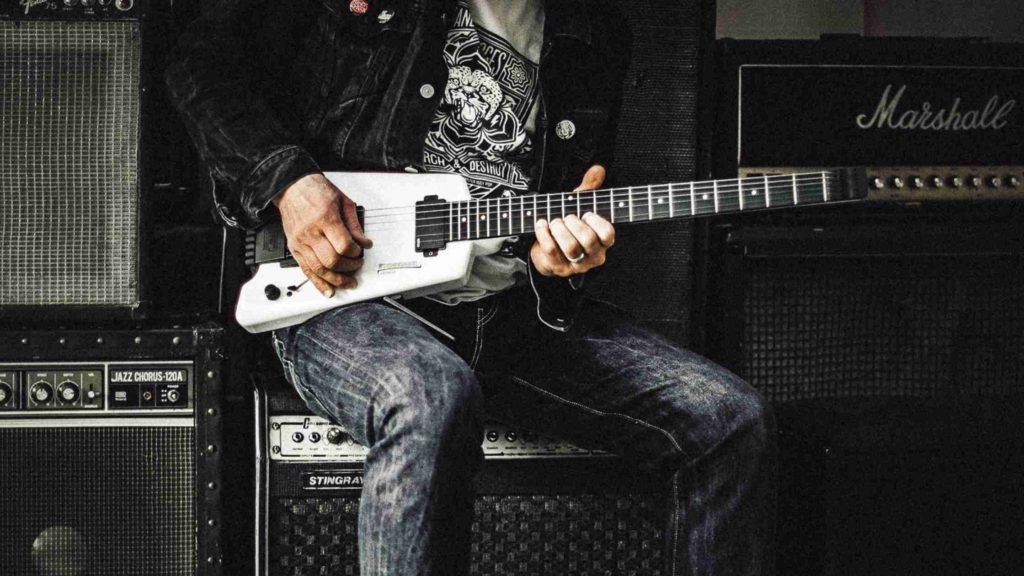
The 80s saw some major transformations in music. The 80s saw bright and talented guitarists wanting to customize their instruments to make their signature playing style stand out and different from the crowd of guitar players around. Challenging the requirement of the headstock and to improve playability, there were a certain set of Luthiers and guitarists who brought the headless types of electric guitars to their existence.
The Guitar
The total length of a headless guitar is shorter than a normal one. The guitar is cut off after the bridge on the top. The rest of the guitar has specific body, neck, and fingerboard woods as per the specs from the manufacturer.
The most obvious question that people have on their minds for a headless guitar is, where do the tuners go? The tuners migrate to the back of the neck behind the bridge. Losing the headstock and the extra hardware on the headstock helps to reduce the weight of the guitar making it more comfortable to play with.
These are manufactured by only a few guitar companies out of which the notable ones are Strandberg, Steinberger, Keisel, Mayones, Tueffel, and Traveler.
The headless guitars are used mostly by Rock and Jazz fusion artists but they are a versatile piece of instrument which can support different music genres.
Artists
The headless guitars have some of the most innovative guitarists of all time. Starting with legendary musicians like Allan Holdsworth, Mark Knopfler, Eddie van Halen and Buck Dharma of Blue Oyster, Cult, you also have Toshin Abasi, Yvette Young, Chris Letchford, Wes Thraiikill, and many more.
Recommedations
The Strandbergs Boden Classic is a great option to start with a headless guitar. If you want, you can also custom build your guitars from Keisel custom shop. Kiesel are a great company used by the likes of Allan Holdsworth, Frank Zappa, Frank Gambale to name a few.
No products found.
Semi Hollow Body
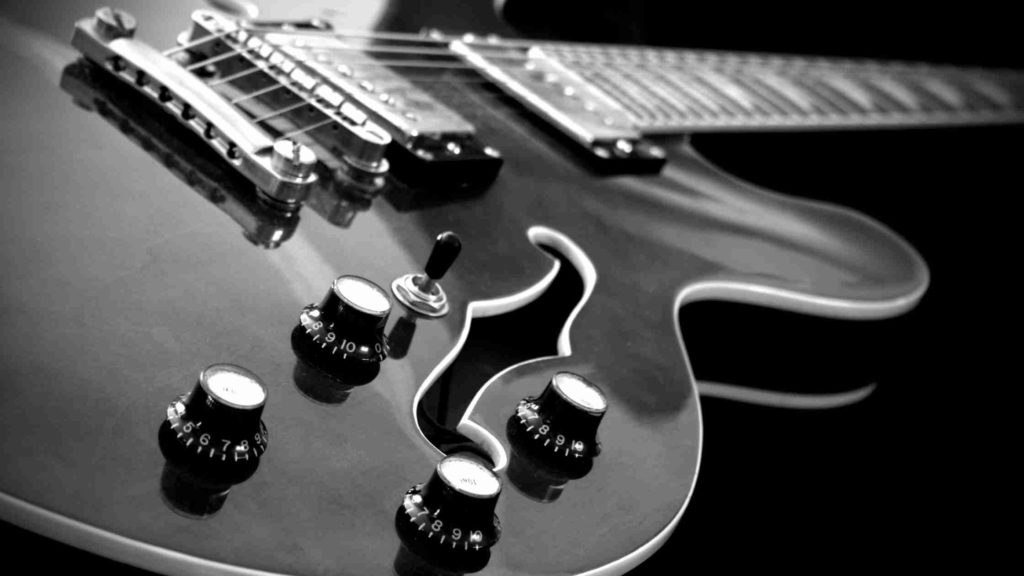
Apart from Solid Body Guitars, you have two more varieties – the semi-hollow body and the hollow body guitar. The semi-hollow body generally has two sections of the body hollowed out in the form of the “f” hole. The rest of the guitar is a solid guitar. These guitars are essentially solid body guitars with wood removed to reduce the weight of the guitar.
Semi hollow-body guitars have a slightly lower sustain and a tighter lower end. These are preferred more by the Jazz and blues guitarists for less intense but at the same time a solid body sound with a hint of roundness of acoustic tone.
Artists
Some artists known for using semi-hollow body guitars are BB King, Ted Nugent, Dave Grohl, and many more. Allan Holdsworth has some semi-hollow models to his name as well (HF2 Fatboy model of Kiesel).
Recommendation
You can consider the Ibanez AS53TRF for a semi hollow model to own.
No products found.
Hollow Body Guitars
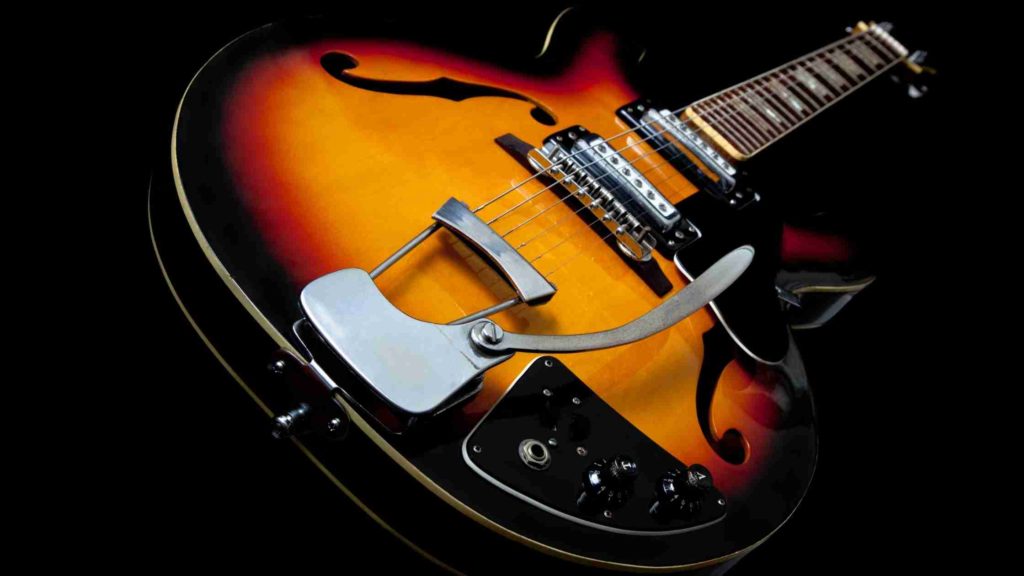
The hollow-body guitars are completely hollow inside. These guitars are closest to the acoustic guitars. These guitars also have an F-hole but do not have any solid wood in between. The hollow guitars are generally used by Jazz players as hollow guitars are least on sustain and provide good low frequencies which sound perfect on a jazz progression.
Artists
Chet Atkins, George Benson, Noel Gallagher, John Lennon and many more.
Recommendations
Some good examples are Gretsch 6120 and Gretsch White Falcon.
No products found.
No products found.
What differentiates a guitar?
What differentiates one guitar from another? As you see each of the guitars above have very different specifications which help guitarists of different genres to create their music. The devil is in the detail.
Lets understand these a little more
Woods
The woods used for the body of the guitar has a strong bearing on the kind of sound you can get. Here is a quick guide:
Alder: Alder is lightweight and has soft tight spores. Alder retains high and also provides support for lows.
Basswood: This is a relatively inexpensive wood and is easy to work on. It is light in weight in low in mass with soft highs, good mids, and low bass.
Mahogany: These provide a warm low and good mids and highs. Les Pauls are made of Mahogany.
Maple: These are the most popular woods for the necks and the fingerboards due to their bright tones. These are moderately heavy with bright highs and pronounced mids.
Swamp Ash: This comes in 2 varieties – hard and soft. The hard ones produce brighter tones and longer sustains. The softer ones are warmer in sound.
Koa: These are great woods and provides the warmth of rosewood and the brightness of mahogany. These are good choices to consider.
Walnut: These are heavier than the others and produce a warmer sound with good sustain.
Generally, a good combination of wood can be Maple for the neck and between an Alder or a Mahogany for the body. Koa and Swamp Ash are the other good options for the body.
Top
There are various top woods which you can choose to make your guitar look and sound awesome. Some of the more common tops are Flamed Maple, Quilted Maple, Flamed Koa, Buckeye Burl, etc. These tops can have finishes and colors which makes these top stand out and look brilliant.
Pick ups
A good guitar will have good pickups. A pickup is essentially a magnet that is coiled around with wire. This combination picks up the frequencies from the string and converts them into electrical signals and produces them via a powdered amplifier.
Types of pick ups
Pick-ups could be broadly three types:
Single Coil: Single coil pickups produce bright and enhanced high sounds.
P90: These are in between the single and the double coil. These are more powerful than the single coils and provides a thicker and grittier sound.
Humbuckers: Humbuckers are made of 2 single-coil pickups that are wound in reverse polarity. This wounding cancels out the natural 60 Hz hum produced by many single-coil pickups. Hence the “hum” of the humbucker comes from here. Meaning it “bucks” the “hum”.
A standard Stratocaster will have three single-coil pickups while a Les Paul will have 2 humbuckers. The super strats provide the middle path and a combination of both humbuckers and a single coil in one guitar. For instance, if you see the Ibanez Jem Series you will see it will have H – S – H configuration. On the other hand, the Ibanez JS series of Joe Satriani will have a humbucker at the bridge and a single-coil on the neck position. Both of these are great options to own.
No products found.
No products found.
Active or Passive
Again, pickups can be active or passive in nature. A Passive Pick up does not need additional electricity or power to deliver the signals, whereas the active pick-ups need an external power source (typically a 9V battery ) to deliver a higher output. Active pick ups deliver more power to the solos and the rhythm. Think of the Dream Theatre sounds when you think of active pick-up.
I personally prefer passive pickups and am very happy with the sound from them. My Ernie Ball Music Man JP 15 has active pick-ups and are great but I like to use them for specific kinds of solos.
If you are looking at smoking hot single coils, then you should consider the Seymour Duncan Yngwie Malmsteen Signature Series Pick Ups YJM Fury. These are really sweet pickups without the hum and powerful. Ideal for any genre. Highly recommended for Strat upgrades,
No products found.
Necks
Neck Profiles are very important and perhaps this is the most important feature that a guitarist looks for. It directly affects the playability. The neck profile, in addition to the kind of wood the neck is made with, is an important consideration.
Premium guitar builds have roasted maple (flamed maple looks even better). The roasted maple is more resistant to humidity changes as the moisture from the woods is removed at the stage of roasting. Flamed roasted maple necks look brilliant and are associated with premium guitars, so are always the first choice of guitarists.
Along with the wood, a thinner and faster neck profile is what mostly the guitarists look for. Ernie Ball Music Man JP series of Guitars have brilliant neck woods and profiles. The new Ibanez AZ series also has some great options.
Bridges
Guitar bridges can broadly be two types – hardtail or the fixed bridge and the floating ones. In the case of a hardtail bridge, you will not be able to use whammy bars. These bridges are super stable and the tuning does not go off easily.
Floating bridges on the other hand can have a tremolo arm. These help the guitarists to explore different sonic landscapes with the use of the tremolo. But these tend to make the guitars go off tune due to the uneven tension created when the tremolos are used.
I personally like fixed bridge guitars. You can compensate with other techniques like bends and harmonics instead of using the whammy bar. But if you have a good locking system you can use the whammy to your hearts content. It will go off tune once in a while which you have to be conscious of.
Tuners
The role of a tuner is to keep the guitar in tune. This becomes important when you are using a guitar with a floating bridge and use the whammy bar in your solos.
It is relatively easier to use a fixed bridge guitar as it does not mess around with the tuning, but in the case of a floating bridge guitar, the tunings can go haywire if the tuners are not locking in nature.
Locking tuners help the guitar to be in tune in spite of the use of whammy. A good guitar will have good quality locking tuners to prevent guitars going off tune.
These small details are huge in differentiating a good guitar from a not so good one. You would want to have a reliable instrument on the stage. You cannot have your guitar letting you down.
Frets
This is the last point on my list which I feel is important to consider. Traditionally frets were made up of nickel silver alloy. Though this works fine but over a period of time the frets wear off leaving ugly depressions at specific positions on the fretboard depending on your most go-to scale. For heavy guitar users, this means that you may have to replace your frets once in a few years.
To counter this, you now have stainless steel frets that do not wear off and are found in newer models of guitars.
Frets can also be of different sizes like a jumbo or medium-jumbo etc. These are dependent on the style of the guitarist. I personally prefer to have medium-jumbo stainless-steel frets on a thin neck profile made up of roasted flamed maple.
Conclusion
I hope this article gives you a good understanding of the types of guitar what you should look for when choosing an electric guitar for your needs. I would suggest you to go to the nearest guitar center and try out various models or play on the guitars of your friends and have a feel of it and then choose one. Whatever it is, you are on the right track and keep going.
Last update on 2024-05-19 / Affiliate links / Images from Amazon Product Advertising API

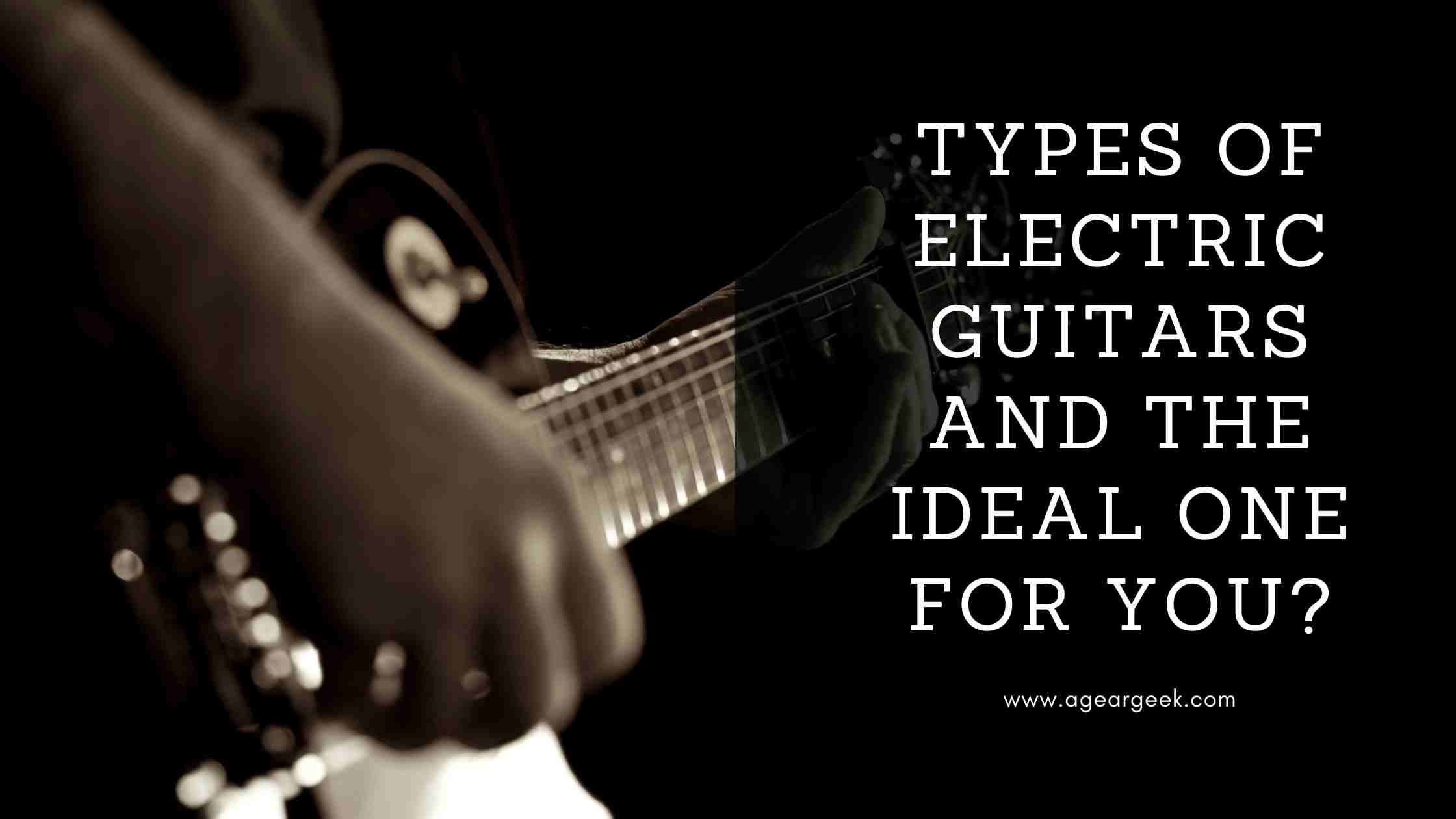


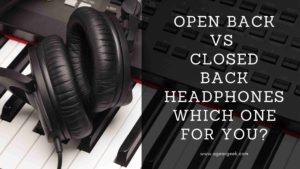

Pingback: The Best Super Strats in the guitar space - A Gear Geek
Pingback: Best Acoustic Guitar under $1000 - Ultimate Guide - A Gear Geek